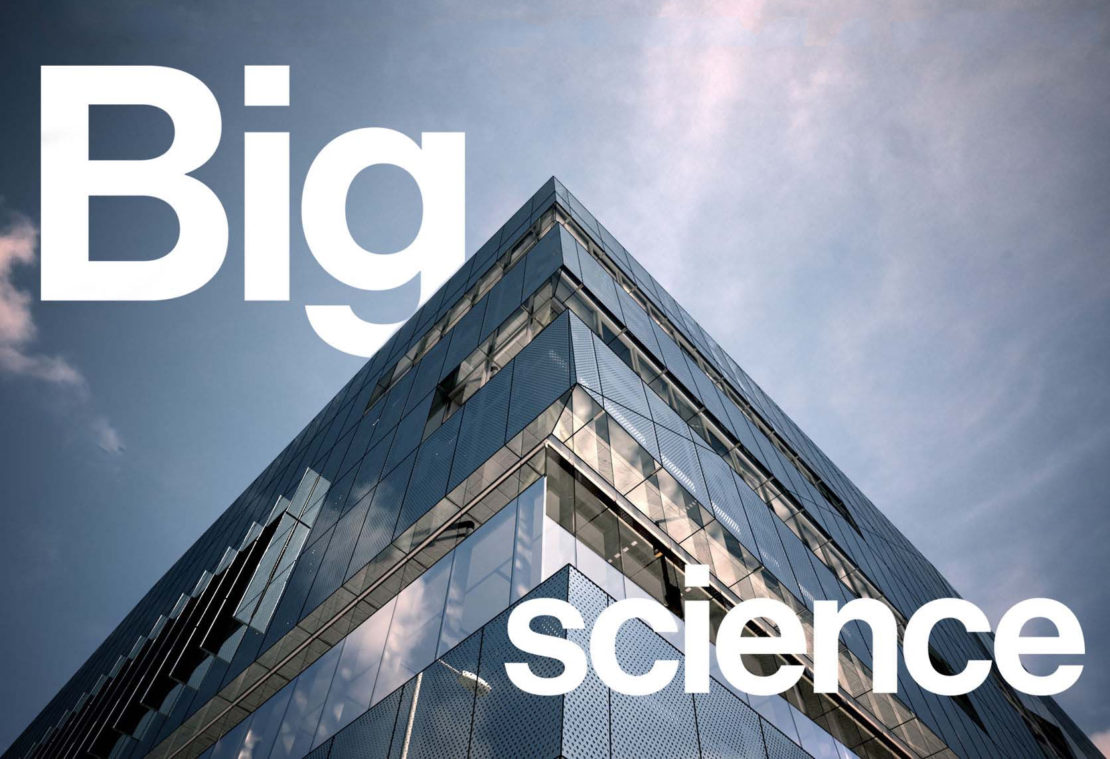
Big science
It can be a little disappointing visiting the laboratories where the great discoveries of our times were made. I was surprised to see the shabby, ageing buildings near Geneva which are the above-ground manifestation of CERN, arguably the most extraordinary experiment of the modern era. Likewise, the crowded corridors of the Cavendish Laboratory in Cambridge don’t look like the kind of place where Ernest Rutherford and Watson and Crick made some of the most earth-shattering scientific discoveries of our age. Numerous other important labs are barely better than sheds; just ad hoc accumulations of temporary buildings crammed with kit. This might lead you to assume that architecture is virtually irrelevant in the culture of science. Yet that’s not how the big institutions, the big universities and big pharma see it. Quite the opposite in fact.
In recent years, scientific institutions have revolutionised their building design. Not only have they propelled themselves to the cutting edge of architecture but other institutions, from schools to corporate HQs have begun to copy the kinds of tropes and devices which have made these buildings so successful.
Back to CERN in Switzerland. It was here that the first great scientific discovery of the 21st century was made, when the Large Hadron Collider (LHC) confirmed Peter Higgs’ ideas about the now eponymous Boson. A tour of the building starts, oddly, with the cafeteria. I say oddly because you might expect to start with the LHC itself, the most awesome piece of machinery ever made. But it is in this shabby, unremarkable canteen that the conversations between scientists happen. Contemporary science is ludicrously specialised and the conceptual leaps in thought about the big picture that we associate with the pantheon of great thinkers – Newton, Babbage, Rutherford, Einstein et al – might seem almost inconceivable now that few scientists can undertake any in-depth research outside their own immediate silos. In order for momentous connections to be made, science has to rely on pushing people together, on the serendipity of informal conversations over a sandwich. These are the longed-for moments of modern science. In the same way as CERN’s LHC is a machine for smashing particles together and seeing what happens, the contemporary science building is, in effect, a collider for scientists.
This means that while the labs, the machinery, the equipment, are still critical components of the building, the corridors and the landings, the stairs and the lobbies (as well, of course, as the cafeteria), become critical spaces when considering the architecture. But for those inbetween spaces to be effective, the whole traditional notion of a scientific building as a series of labs linked by narrow, dingy corridors and miserly communal spaces needs to be abandoned.
The nature of science is that its requirements change, and change fast. That’s why the most innovative labs and science buildings were often in ramshackle accommodation cobbled together at the back of an existing building in a university or during the privations of wartime: think of Los Alamos or Bletchley Park. These buildings were often little better than shacks. This is even true of more recent structures like MIT’s run-down Building 20 which saw the genesis both of Noam Chomsky’s linguistic discoveries and the birth of hacker culture.
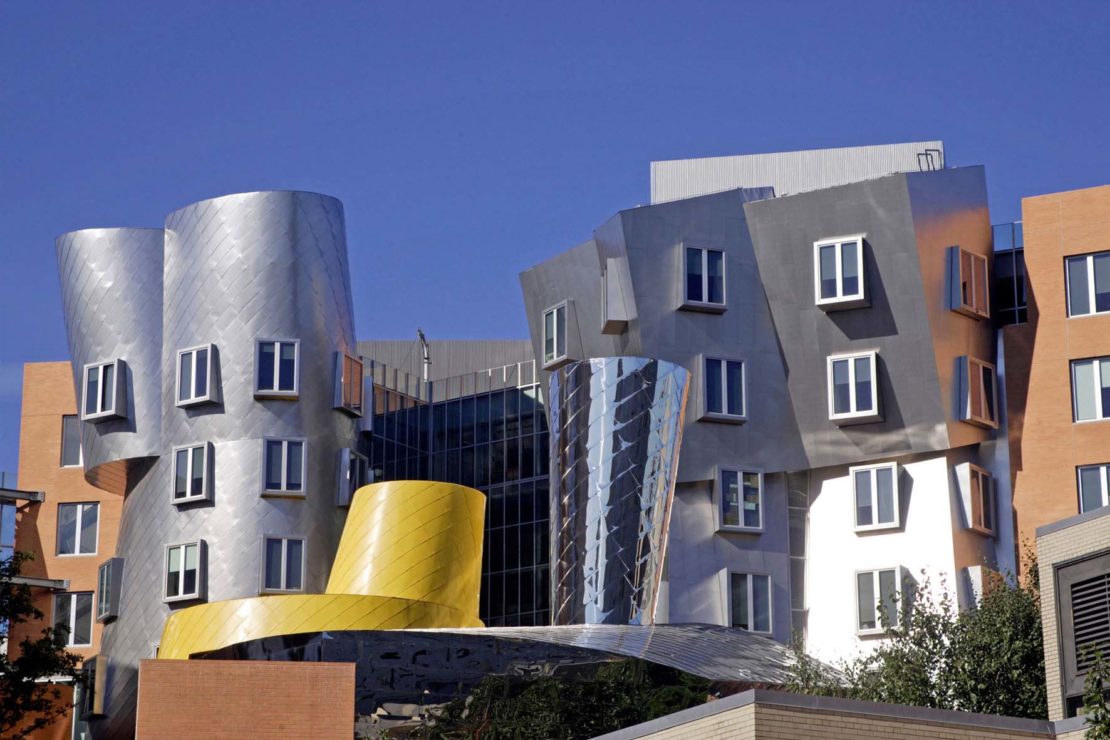
Stata Center, Cambridge, Massachusetts By Frank Gehry
MIT replaced their celebrated but run-down Building 20 with the Stata Center. Designed by superstar architect Frank Gehry, its look, both inside and outside, has helped set the tone for subsequent lab design (Alamy)
The successor to Building 20 is very different. Designed by Frank Gehry, architect of the Guggenheim Bilbao and Paris’s new Fondation Louis Vuitton, the Stata Center opened a decade ago. The building is a captivating city in itself. Folding, collapsing, towering, its elements crashing into each other and bouncing back around a central amphitheatre. Colourful, shiny, bewildering, it glistens in the sun, a place of surprising architectural collisions just as it is one which encourages felicitous social and intellectual collisions. Its interior is equally open and exciting, a raw space defined by concrete, steel and plywood; it is not precious, and has the feel of a student bar that is always open, accessible and inviting.
The Stata Center has had a major impact and, although the buildings that followed it may have been less adventurous in their architecture, its ideas have echoed through much subsequent building. The area occupied by Oxford University’s New Biochemistry Building, designed by Hawkins\Brown, called for a little more conservatism than that of Gehry’s Stata Center; but the structure embodies many of the same ideas. It is built around a new public space – an open, glazed cafe – and, perhaps most importantly, a series of theatrical stairs which wind their way through the central atrium. It’s designed to engineer encounters on the way to somewhere else and evinces a spirit of open generosity.
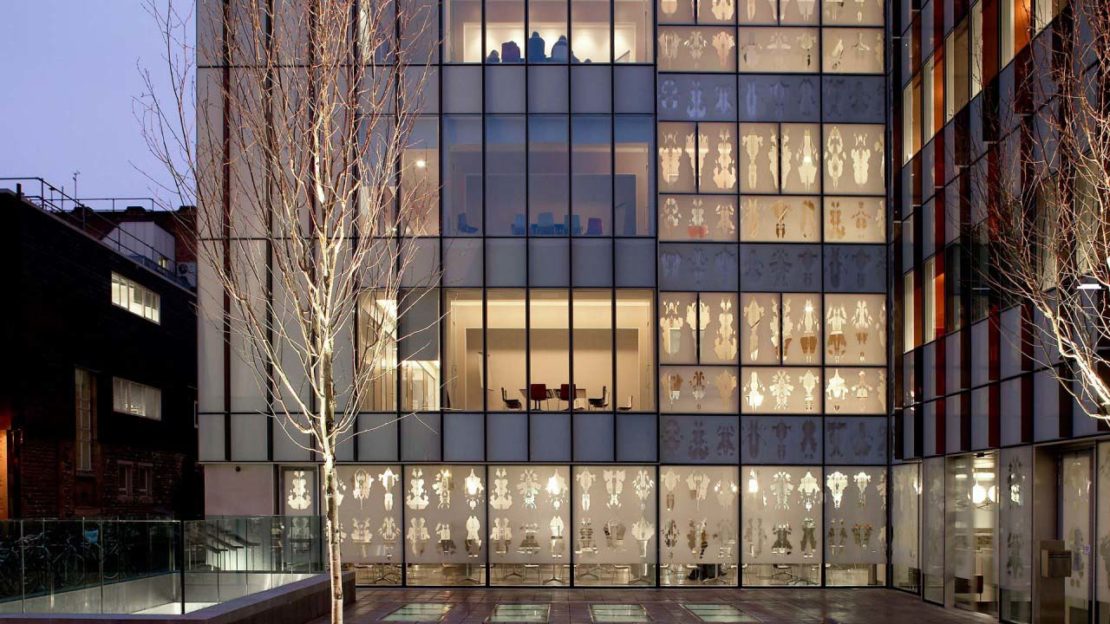
New Biochemistry Building, Oxford. By Hawkins\Brown
Oxford University's New Biochemistry Building is more restrained than MIT's Stata Center but draws on similar ideas, utilising space outside the building, an open canteen and dramatic atrium stairs to encourage spontaneous encounters (Image reproduced by kind permission of Hawkins\Brown, photograph copyright Keith Cole)
Of course, there’s a lot of money in big pharma and in the science around it (including, currently, biochemistry), and that partly explains the boom in its architecture. Biotech is the next big investment area. It is also boom time in the commercial world. The unveiling earlier this year of Swiss architects Herzog & de Meuron’s plans for their elegant, plectrum-shaped building for AstraZeneca on the edge of Cambridge raised eyebrows, coming as it did just a couple of months after the company fought off a huge takeover bid from US giant Pfizer. But avant-garde Herzog & de Meuron (designers of Tate Modern and the Beijing Olympic Stadium) are as expert in designing for pharma as they are for culture: for years they’ve been the in-house architects for Roche back home in Basel. They are currently building a controversial tower for Roche which will become one of the low-rise city’s most visible landmarks. It is an attempt to imprint the city’s key industry (alongside banking) on its skyline. Perhaps surprisingly, Herzog & de Meuron are also working for Basel’s other pharmaceutical giant, Novartis.
Novartis have gone beyond the usual single cool building to establish a pharmatropolis on the banks of the Rhine. Some of the world’s most renowned and respected architects have been commissioned to design a series of buildings for it and help create an extraordinary inner-city campus. Frank Gehry is there, alongside some of the biggest names in world architecture: SANAA and Fumihiko Maki from Japan, Diener & Diener from Switzerland and David Chipperfield from the UK. (The best buildings, intriguingly, are designed by cult local practices including Peter Markli, whose Welcome building is a subtle, elegant revelation.)
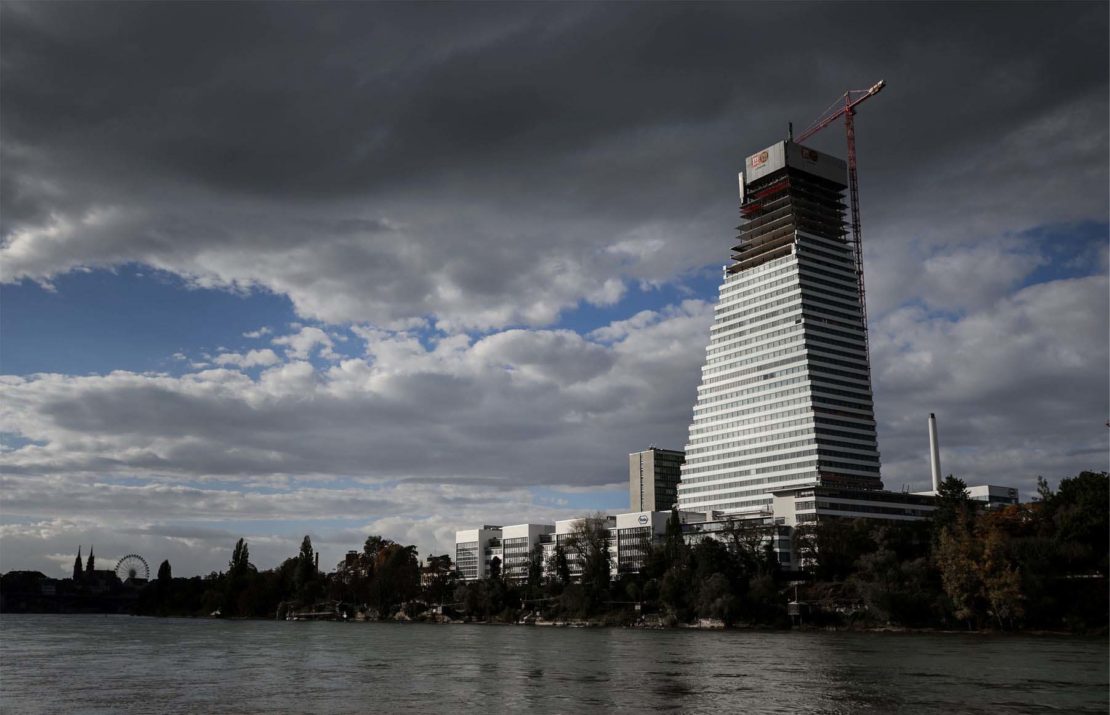
Roche Tower, Basel. By Herzog & de Meuron
The new building for pharmaceuticals giant Roche from the avant-garde Swiss architects has caused controversy. Towering over Basel, it seeks to project the importance of both the company and the industry to the city (Getty)
It is difficult to express quite how good this architecture is. These are hybrid sites, sitting somewhere between industrial, lab and campus design; and they demonstrate an impressive effort to use architecture to humanise the space and facilitate the process of research. If there is a downside, it lies in the scientist’s particular need for privacy and patent (and the pathological fear of copying). As a result, this potential model for future urbanity remains entirely private. Walled and secure, it is not integrated into the surrounding city, which is a real shame. Gehry’s Stata Center works so well in part because it is entirely public and resolutely open, a 24-hour urban microcosm. In every one of these cases, of course, the architecture is not only there to facilitate science but to create a brand. In the case of the university buildings like those at MIT or Oxford, an architectural icon makes fundraising easier: donors want their names associated with innovative and exciting buildings. In the world of big pharma this process is a subtle blend of marketing and status. Novartis is in competition with Roche and that manifests itself on the skyline and inscribes itself in the city streets. But it also needs to be remembered that the field of pharmaceuticals is restricted in terms of marketing, its packaging is limited, its branding opportunities curtailed. So architecture becomes one of the few tools it has at its disposal to create a corporate image.
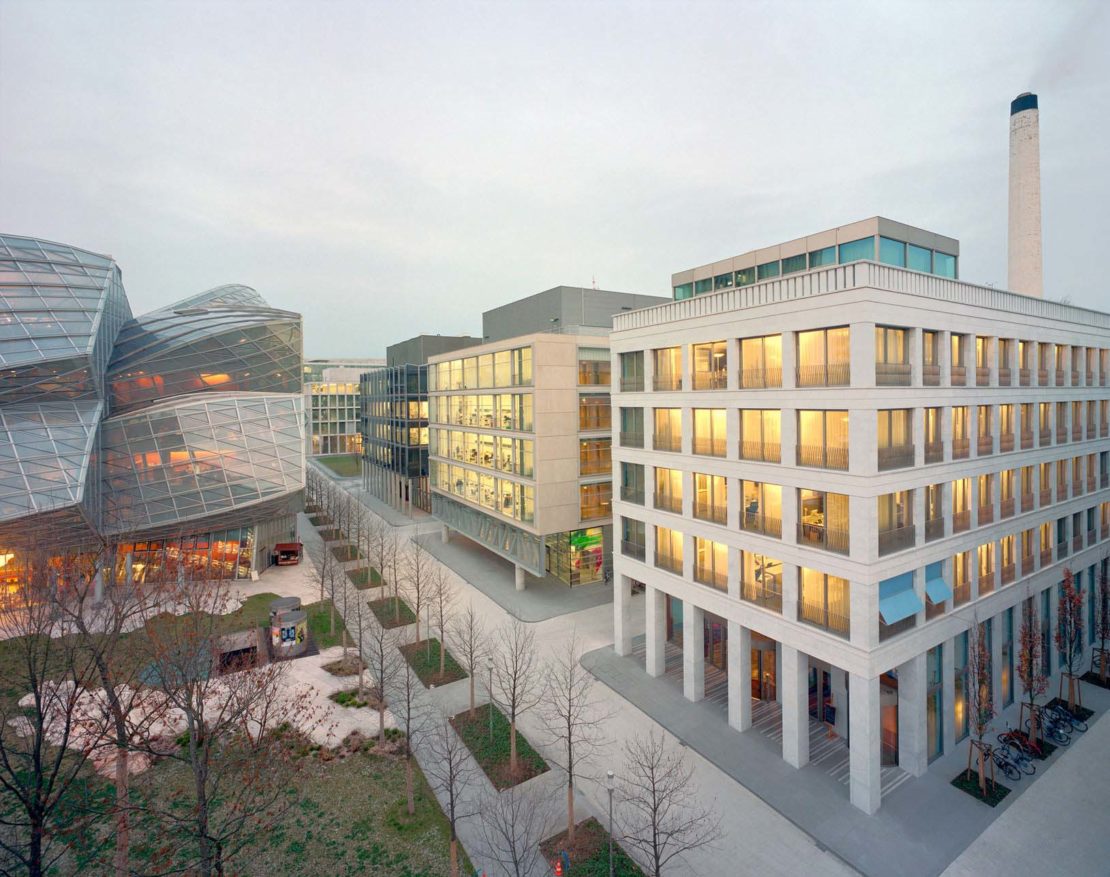
Novartis campus, Basel. By Frank Gehry, Studio di Architettura and others
Also on the banks of the Rhine in Basel, Novartis is creating an extraordinary inner-city campus for its pharmaceutical empire. It includes buildings from Frank Gehry (left), Studio di Architettura (front, right) and Rafael Moneo (centre, right) (Harf Zimmermann/NYT/Redux/eyevine)
It was once thought that scientists suffered from a kind of autism, that their specialisms and the intensity of their research necessitated such an extreme focus on one aspect of a particular field that they were unable to see the bigger picture, be it ethical, social, political or urban. That is clearly no longer the case. After a period of exile on suburban campuses, science is moving back into the city. Currently under construction, the black stealth block of Jestico + Whiles’s National Graphene Institute in Manchester and PLP-HOK’s Francis Crick Institute in Kings Cross demonstrate the re-emergence of science as an urban discipline and an architectural phenomenon as well as illustrating the potential financial rewards involved in processes and patents. Both these buildings represent an attempt to de-atomise practice, to nudge scientists and researchers into bumping into each other in denser, more urban, more urbane environments. The workspaces are of course better, but not hugely so. The point is that it is more productive to work in a building which is enjoyable to be in, not merely functionally improved. The labs and workspaces may not, in fact, be that much better.
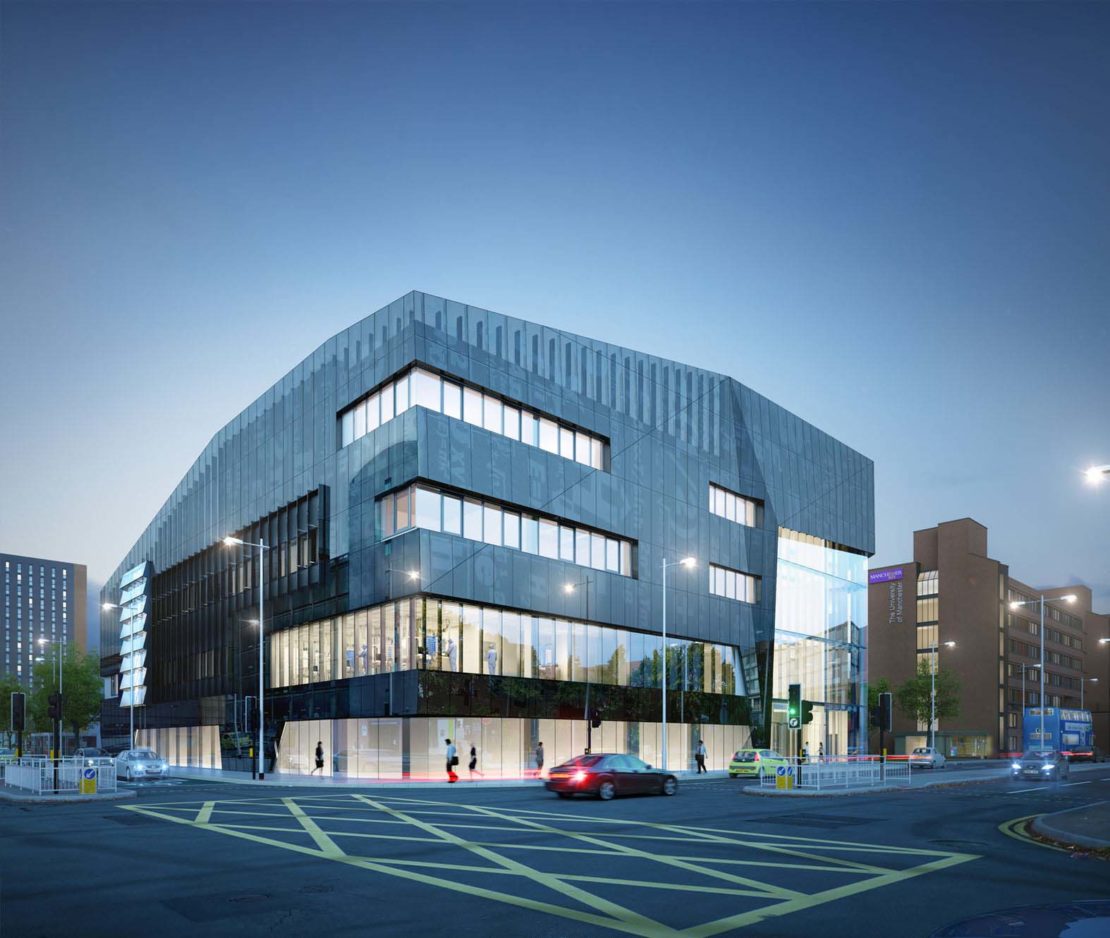
National Graphene Institute, Manchester. By Jestico + Whiles
Manchester's National Graphene Institute follows a similar pattern to other science organisations in pushing the workplace back into a city setting, fostering a more dense and urban plane for its scientists and researchers to interact – in opposition to the suburban science park of the past (courtesy of Jestico + Whiles)
Today these ideas about the importance of interaction and the quality of the public space are passing into the corporate realm and beyond. The idea that students and schoolchildren learn as much – if not more – from each other as they do from teachers, and that creativity in the workplace stems from interaction rather than isolation in a Dilbert-style cubicle, has long been gaining currency. The lesson from science is that invention emerges from chance interaction. The real action occurs in the inbetween spaces, the interstices, the architectural gaps both in and around the institution. And that makes for better buildings, better spaces and, ultimately, for better cities too.